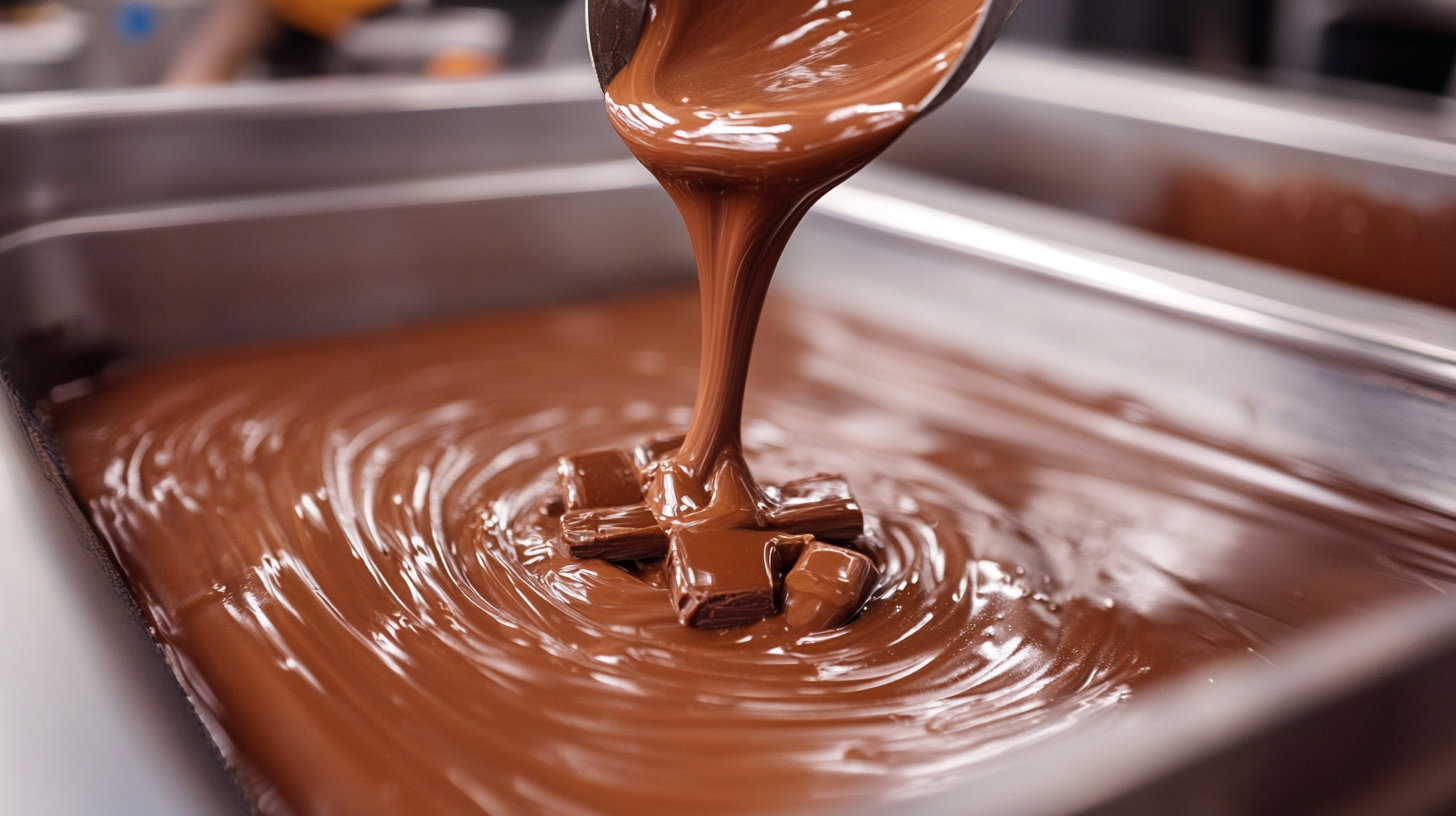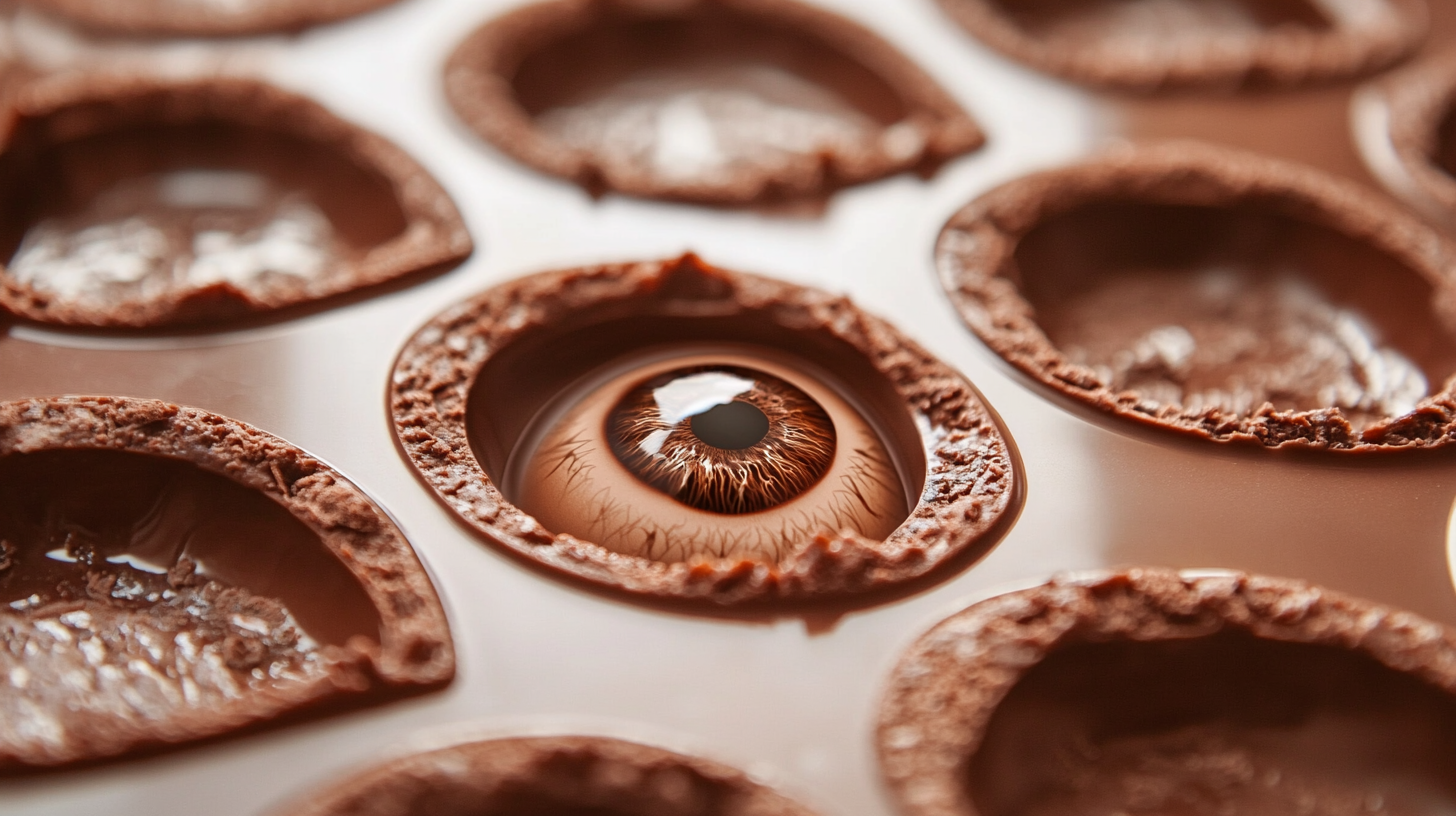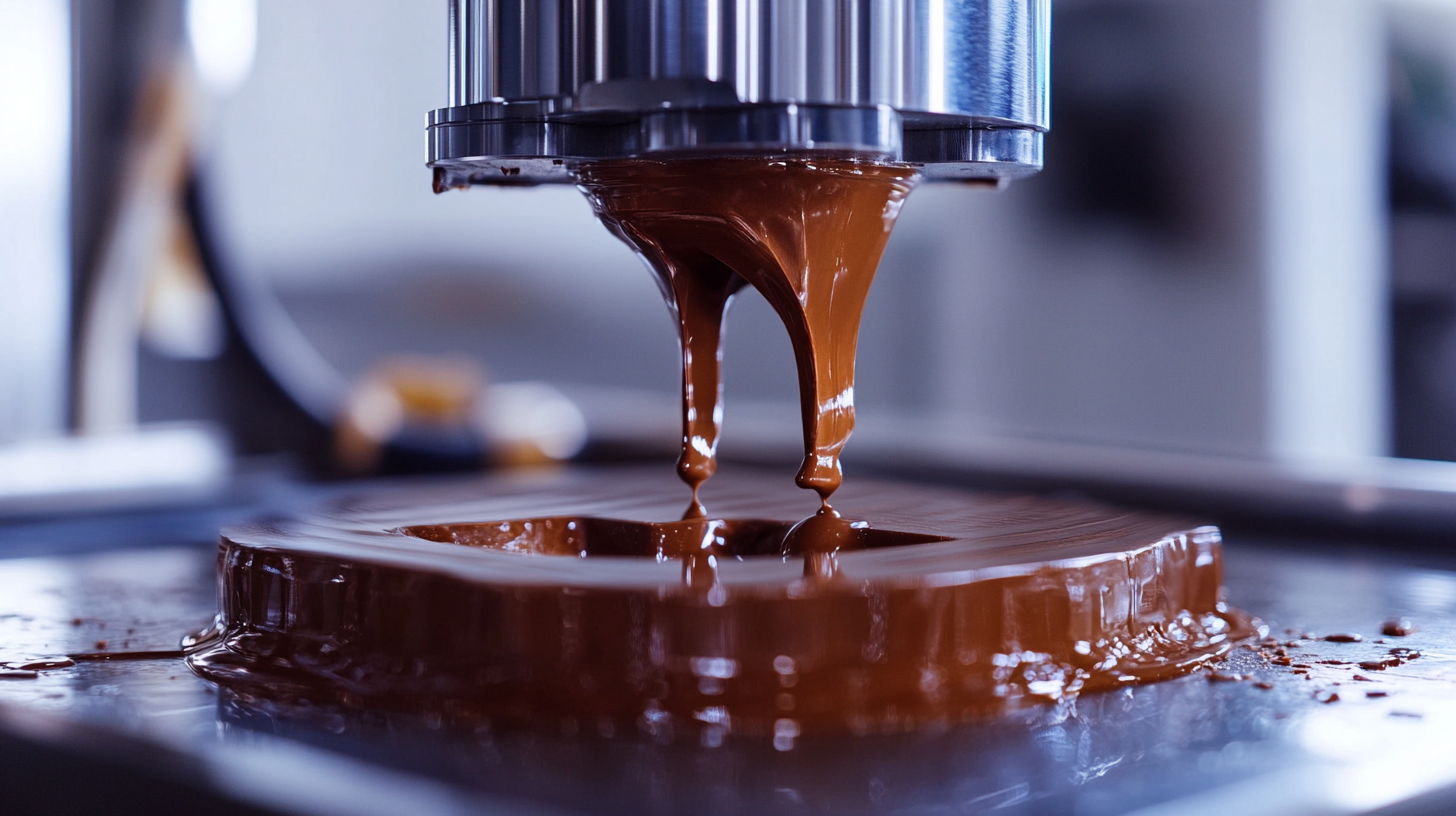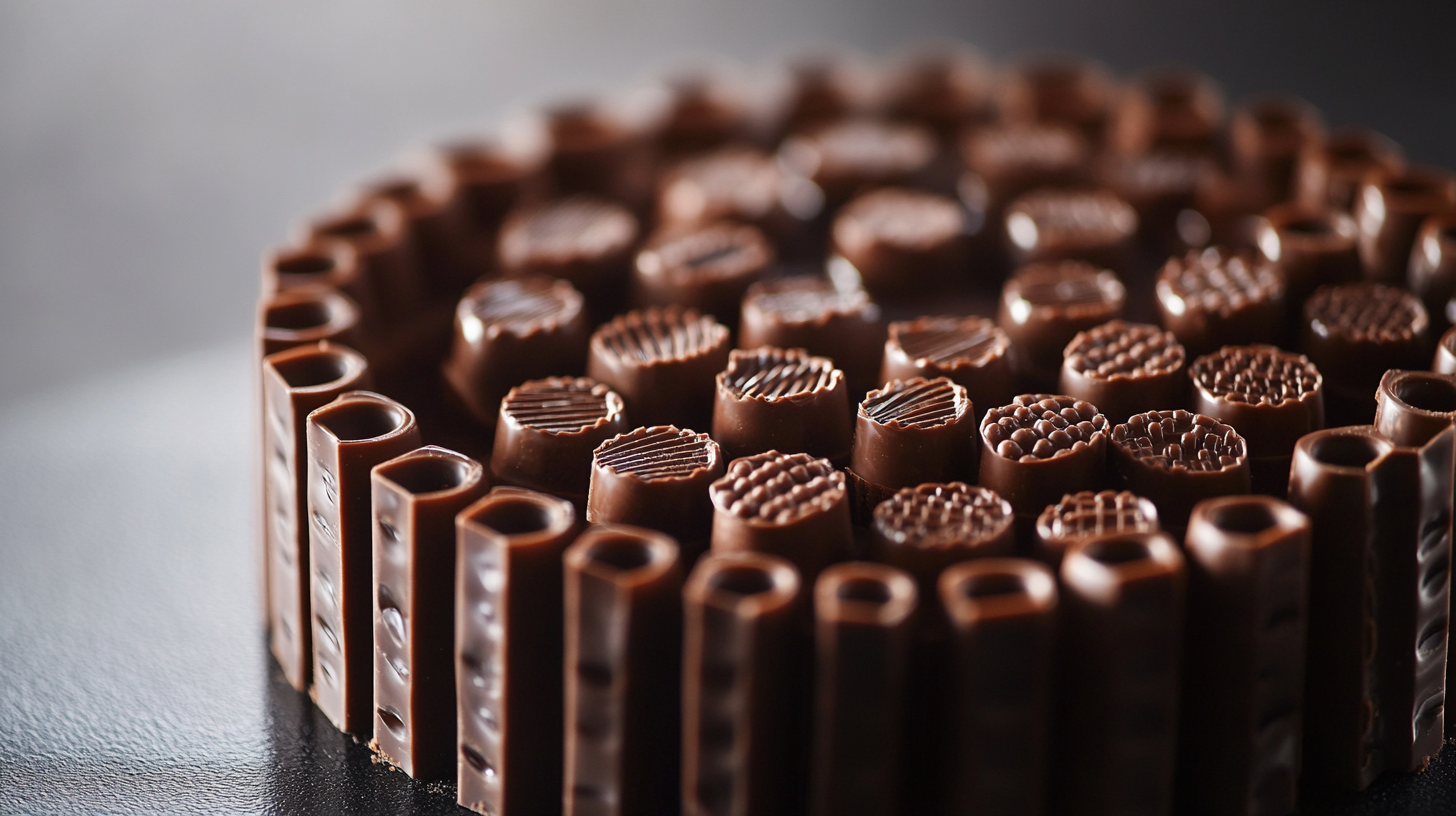The industry of chocolate molding is at the verge of a high transformation by the superpowers of customer preference and advanced production techniques that the world has been viewing as of today to 2025. Recently, according to Mordor Intelligence, the global chocolate market will be well over USD 161.56 billion by 2025 at a CAGR of 4.6%. Of this progress-from the progressive consumptions-it owes a great part, too, to the uprising of the categories of artisanal and premium chocolate, which require-specific molds or "stampi per il cioccolato" in most cases. The growing trend towards customization and personalized chocolate gifts is further propelling demand, making innovations within the chocolate mold segment essential.
Confectionery is clamoring for custom-styled chocolates, and here is where the role of advanced chocolate molds becomes more important than ever. According to a report by Research and Markets, the market for chocolate molds is expected to gather steam across the world; due consideration will be given to sustainable materials and better designs. E-commerce, too, would allow the small players to jostle space in a previously monopolized business, making chocolate molds accessible and multifunctional. Thus, the future of innovations in chocolates depends on the techniques under which small businesses strategize the use of "stampi per il cioccolato" to pique consumer interest and chocolateify the experience.

While it continues its evolution, the chocolate industry does not get left behind making exciting transformations in designs and shapes of the molds as chocolatiers use them. As we look ahead toward 2025, the issue of being creative and innovative in chocolate molding has become a lot easier to communicate. Trends signal the growing desire for one-of-a-kind artistic designs that are not merely edible but also beautiful. Funky geometrical patterns, intricate landscapes, and customizable molds are all in favor these days among chocolatiers trying to carve their uniqueness into saturated markets. For their part, sustainability is another very important issue that will go a long way toward influencing the future shape of chocolate molds. Designers focus more on materials and processes that conserve the environment. More people are showing interest in not just easy-to-clean but reusable silicone molds. Then, on the other hand, there is a great increase in people that prefer biodegradable alternatives, which manifest a larger picture of the food industry going for plastic waste reduction. Consumers want goods that are sustainable, moving into that mold and therefore giving chocolatiers a way to enhance their brand by presenting their creations in molds consistent with their values. Besides, one can also expect that with technological advancements, even the designs of molds will be 3D printed. This innovative approach opens up endless avenues that will allow for intricate designs that previously could not be made using standard molding techniques. Now, chocolatiers have the opportunity to manufacture personalized molds for almost any special event, from weddings to corporate functions, thus increasing the availability of personalized experiences for ever-growing consumer demand. Like all mold types, chocolate molds will continue to evolve, shaped as much through individual artistic expression as by the sustainable practice of a sweet future.

As the chocolate industry progresses towards heightening its production, on the other hand, mold production tends to be increasingly swayed by different trends of sustainability. According to a Grand View Research report, the eco-friendly packaging global market for the food industry shall witness a boom up to $500 billion by the year 2028, and a larger share is credited to the confectionary industry. While several manufacturers are readying themselves to take on the sustainable challenge with innovations in biodegradable and recyclable materials, the sustainable mold manufacturers have been able to catch the attention of these mold manufacturers.
The preference of consumers for transparency in sourcing has also begun to challenge mold production processes. Research by Mintel shows that a staggering 48% of consumers would purchase more from companies that are considered to be environmentally responsible. Many brands are making investments in sustainable practices that include better energy consumption for the manufacture of molds and the use of non-toxic materials that can be incorporated into ecologically viable initiatives.
This sustainability trend is increasingly affecting the production of chocolate molds and their designs. More brands are taking the route of using one-time molds that minimize waste with multi-use and modular designs. It is predicted that by 2025, 60% of manufacturers of chocolate molds would have adopted sustainable measures, thus setting this particular sector within the direction of environmentally safe production methods. This change will not only affect the chocolate mold market but further the sweet innovations landscape.

3D printing technology is changing the scope of the food industry. The chocolate mold market is a place where this innovation is going to be highly prominent by the year 2025. 3D printing does allow chocolatiers and manufacturers to build molds that are complicated and entirely customizable with precision that had previously been unattainable. From the point of view of these molds, there is quite a wide range of designs available, compared to the exhaustive traditional ways.
Such custom-made chocolate molds-on-demand make the real exciting shout in these innovations. As has been said in recent discussions on this technology, "the culinary domain is going towards: 'everyone can make'." This essentially means that the amateur chocolatier gets to experiment with their designs, making space for some very interesting flavors and artistic presentations. On top of this, since producing the molds by means of 3D printing is very well controlled, much less waste material is produced in the process, and the entire undertaking is completed in less time, thereby fulfilling the increasing consumer demands for products that are more individualized.
As such, with the continued observation of the interface between technology and culinary arts, it is certain that progress in the field of 3D printing will be so beneficial for the future of chocolate mold manufacturing, and also a precursor to more revolutionized forms of edible sweetness. Whether it be in giving unique shapes to chocolates or in ways that integrate flavors in unexpected ways, the future of chocolate is sweetened by the possibilities that 3D printing offers.

Consumer preferences are impacting the chocolate mold industry in many ways that have not been experienced before, leading up to 2025. A report by Grand View Research indicates the global chocolate market is expected to reach $210 billion by 2025 primarily due to changing consumer preferences toward personalized and artisanal products. This preference is not merely toward taste: the aesthetics of chocolate include totally distinct shapes and designs as marketplace differentiators.
Social media has greatly changed consumer behavior as brands favor striking designs of chocolate molds that not only satiate the taste buds but are also worthy of Instagram posts. According to research from Mintel, 35% of consumers believe that visual appeal is as important as taste in relation to chocolate. Consequently, manufacturers invest in innovative mold designs catering to these tastes, including a seasonal theme, even the most intricate design shapes associated with particular events.
Moreover, according to Nielsen, the rise of sustainability is a game changer in consumer preferences. More than 66% of consumers globally are willing to pay more for sustainable brands, thus prompting mold makers to consider alternative materials and eco-friendly production methods. Such shifts not only satisfy consumer demand but also build brand loyalty, as consumers increasingly favor companies aligned with their values. The chocolate mold industry should take its chances with its opportunities as these two dimensions accelerate further: personalization and sustainability.
The mold industry has taken a different turn with the demand for chocolates that can be molded into different shapes appealing to the clients. With having milled to an artistic chocolate maker, the specific folds expand from standardized molds. Indeed, some of these one-of-a-kind chocolate molds become anything from tiny to complex flower designs to themed molds for seasonal occasions-a move towards an increasingly adventurous clientele. The trend is pronounced in the gourmet markets wherein customization and creativity are fast becoming the most important factors in growing the market.
The emerging markets also have something to say about where things are heading in chocolate molds. A significant requirement is created for molds that suit local tastes and traditions in the wave of countries in Asia and Africa-which are being brought into the culture of eating chocolate. Molds portraying indigenous flora, fauna, and cultural symbols, for example, are beginning to enjoy popularity among manufacturers and end users alike. Besides, the increasing number of e-commerce platforms has paved the way for small producers and home bakers to access a much larger range of chocolate molds and drumming creativity worldwide.
Novel materials are creating quite a ripples within molds of chocolates, thereby creating better usability with flexibility in designs. For instance, silicone molds hava better release properties and can manufacture molds in much broader shapes as compared to traditional metallic molds. This innovation is opening new avenues for intricate designs at a cheaper price, democratizing the process of chocolate making even further. With the manufacturers adopting these trends, it seems that the future of chocolate molds is bright, being always filled with diverse options available according to the demands of the global palate.
Utilizziamo i cookie per migliorare l'esperienza utente. Per maggiori informazioni, consulta la nostra Cookie Policy.